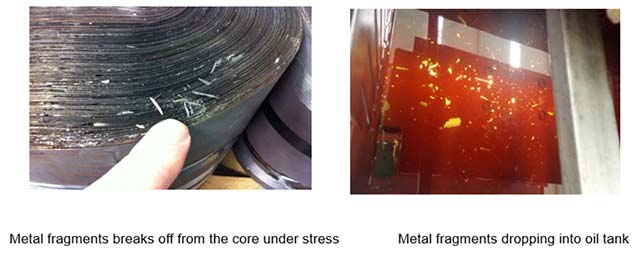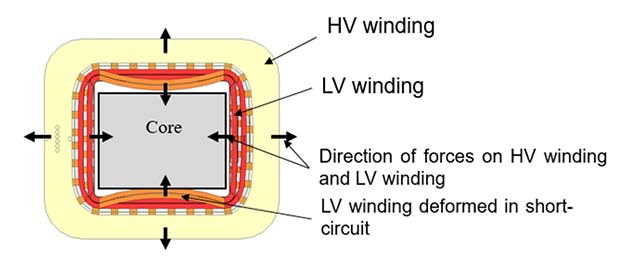Amorphous core transformers are manufactured using ferromagnetic amorphous metal formed into thin foils. Their higher resistance and thinner foils have been proven to lead to low losses and better resistance to harmonic wave. The use of amorphous metal transformers gradually gained popularity, particularly throughout India and China who have been using them since about 2005. Europe and the USA have been slightly more cautious to use this type of transformer, due in part to the higher labour costs of production.

CRGO Left, Amorphous Right
Energy researchers have been excited by the prospect of reducing core loss within electricity grids by replacing traditional Cold Roll Grain Oriented (CRGO) steel transformers with AMT, which could reduce the core loss by as much as 75%. However in recent years, there have been some concerns about the use of amorphous core transformers, particularly in relation to potential higher failure rates and poor overload capacity.
In this blog, Teck Global looks at the potential disadvantages of using amorphous core transformers.
Advantages of Amorphous Metal Transformers (AMT)
Compared with CRGO (Cold Roll Grain Oriented) transformer, AMT has the following main advantages:
- Lower no-load loss.
- As the no-load loss is lower, the temperature rise of transformer is lower.
- Better harmonic wave tolerances.
- Potential for lower total cost of ownership.
The disadvantages of the Amorphous Transformers are as follows:
1. Degradation of efficiency over time
Amorphous metal is very brittle and does not withstand continuous mechanical stress. Vibrations, step-loads and the short-circuits will degrade the amorphous metal and its efficiency permanently. This leads to a higher no-load loss over time.
2. High failure rates
Due to the fact that amorphous metal is brittle, small fragment are broken off during manufacture and over time. This can cause partial discharge which leads to degradation of the oil and and a higher failure rate.

3. Impossible to Repair
Once the small fragments of amorphous are broken off, it is impossible to repair the core and the performance will remain degraded. The scattered fragments present a challenge for fault finding and diagnosis.
4. The ability to withstand the short-circuit impact is low
Due to its brittle properties, amorphous core transformers are built in a rectangular shape. Rectangular shape cores have a lower ability to withstand the effects of short-circuit fault . This is because the distribution of forces on a rectangle is uneven; as opposed to round.

Transformer Core showing HV and LV Windings, and Associated Forces
5. Poor Overload Capacity
Because the saturated flux of amorphous metal is much lower than electrical steel, it is easy to be over excited. So the overload capacity of AMT is much lower than conventional transformer. 80% of load is dangerous for AMT, whereas the conventional transformer can run with 120% of load.
6. Noise Pollution
During manufacture, the core of an amorphous transformer cannot withstand compression. Larger gaps exist between each layer of the sheet. These gaps contribute to the noise emitted through magnetostriction, and are significantly higher compared to conventional transformer.
7. Increase in weight and volume
The saturated flux of an amorphous alloy is much lower than Cold Roll Grain Oriented (CRGO) laminate steel. In order to achieve the same capacity, an amorphous transformer will require a larger core, increasing the size of the transformer and its volume. This also translates to larger installation areas and support structures.

CRGO vs Amorphous Transformer Legs
Summary on Amorphous Transformers
In summary, amorphous core transformers have some obvious advantages on paper over the traditional CRGO transformer. However after years of service these advantages are eroded due to limitations of the material and process.
With continual advancements and research around AMT technology, we may see some solutions to the issues outlined above. Until then, continual testing, research and development is required to ensure before a more widespread adoption of this technology.
According to David Zucaro, Electrical Engineer and Managing Director at Teck Global, "The amorphorous core transformer holds considerable promise, offering the potential for lowering the carbon emissions due to losses in the grid. However early adopters are finding that the technology isn’t quite ready for large scale roll out."
